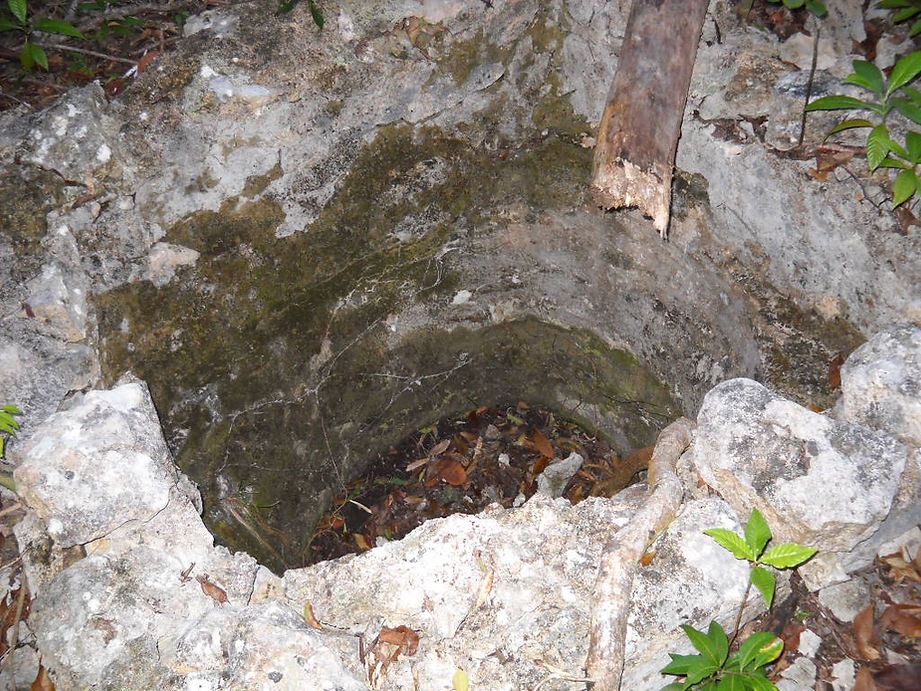
Mysteries below the surface

Banana hole
Banana holes are a distinctive form of dry cave characterized by their typically circular or oval morphology. These depressions can exhibit openings with diameters of up to 10 meters and vertical dimensions ranging from 1 to 3 meters. The term "banana hole" originates from the historical practice of cultivating banana trees within these formations. Their origin is closely linked to past fluctuations in sea level, serving as significant indicators of the geological and karst evolution of the Bahamian archipelago.
Pit caves, also known as sink holes, are a type of karst formation found throughout The Bahamas. They are vertical shafts that can descend up to 10m. They are seen in Pleistocene rocks and are apparently absent in Holocene sediments. Unlike other karst formations such as blue holes and Banana holes, pit caves form independently from sea level rise or fall.
Pit caves, like banana holes and blue holes have been observed to contain materials of historic interest such as Lucayan remains.

Pit cave/ Sink Hole


fact sheets

COMING SOON!

COMING SOON!

COMING SOON!

COMING SOON!




photo gallery
 |  |  |
|---|


resources
Mylroie, J.E., Carew, J.L., Curran, H.A., Godefroid, F., Kindler, P. and Sealey, N.E., 2012. Geology of New Providence Island, Bahamas: a field trip guide.
Sullivan, R.M., van Hengstum, P.J., Donnelly, J.P., Winkler, T.S., Mark, S.E. and Albury, N.A., 2020. Absolute and relative dating of human remains in a Bahamian sinkhole (Great Cistern, Abaco). Journal of Archaeological Science: Reports, 32, p.102441.





